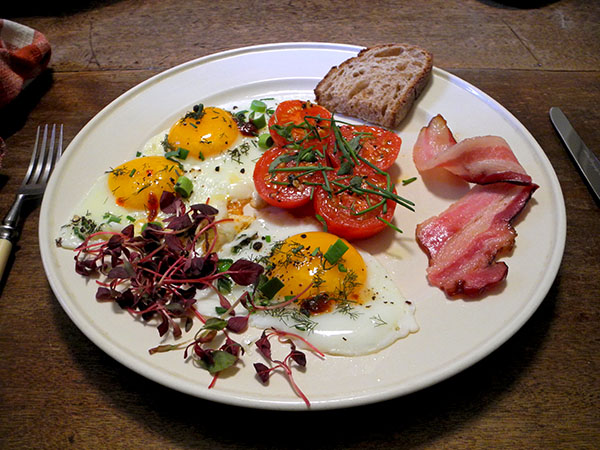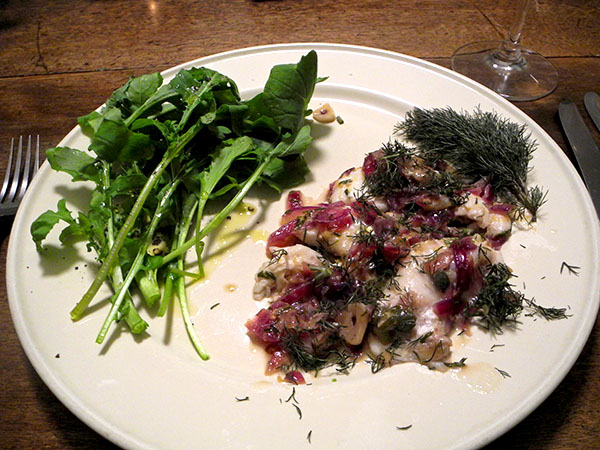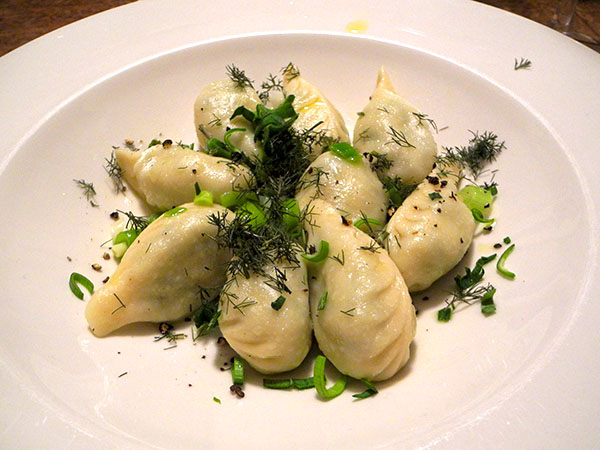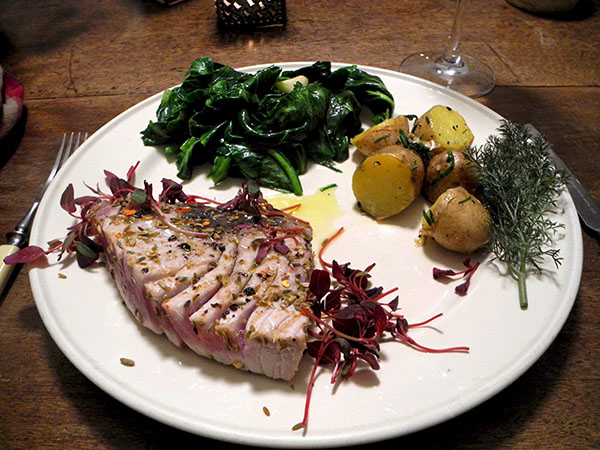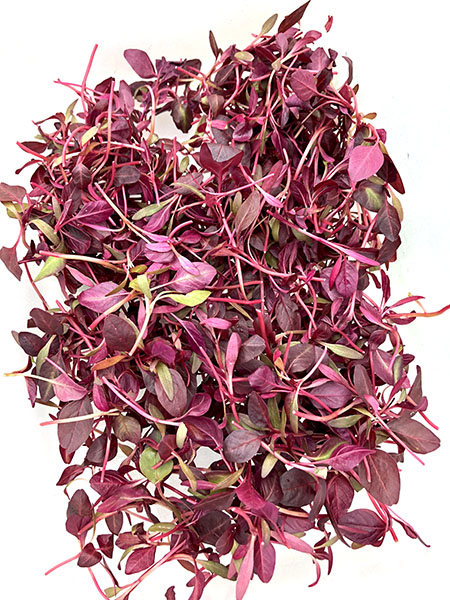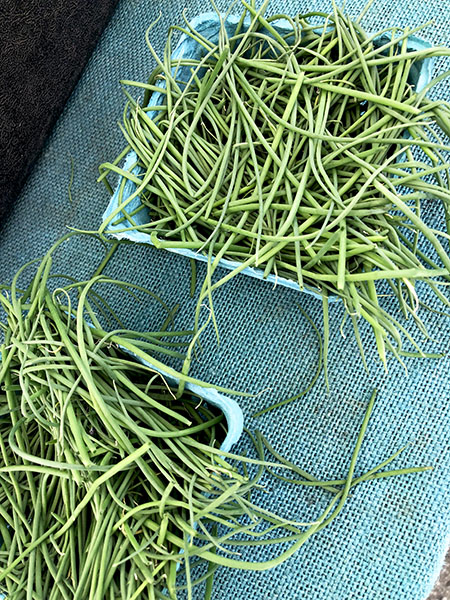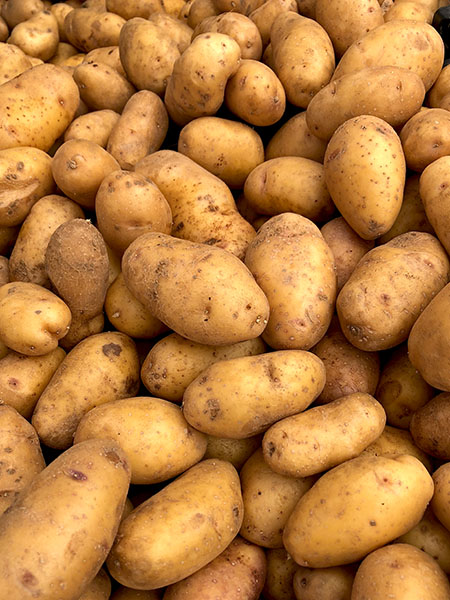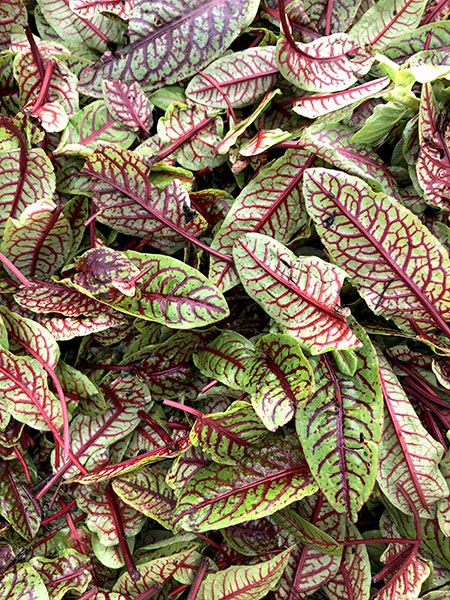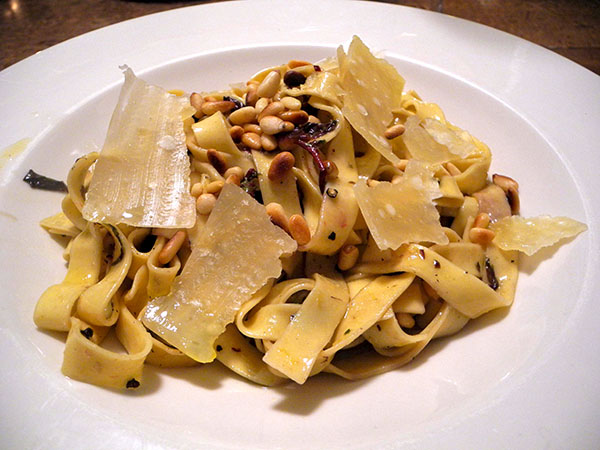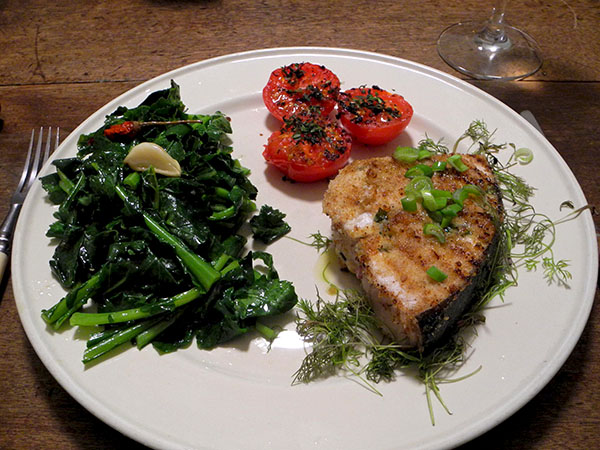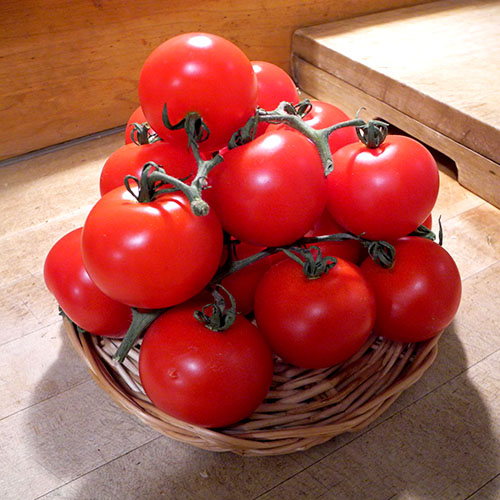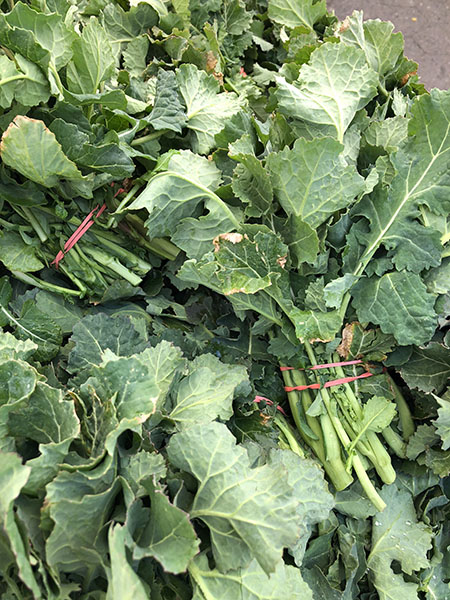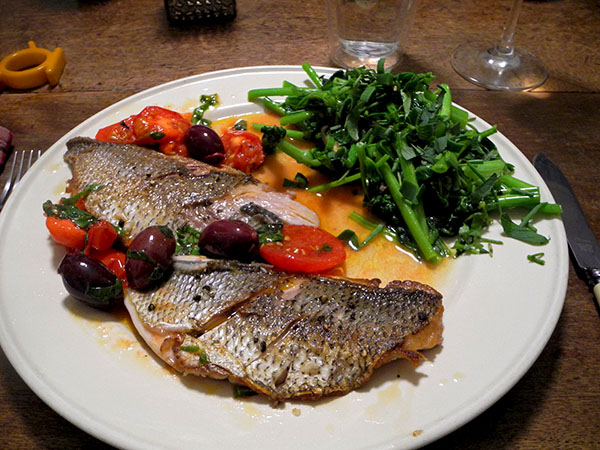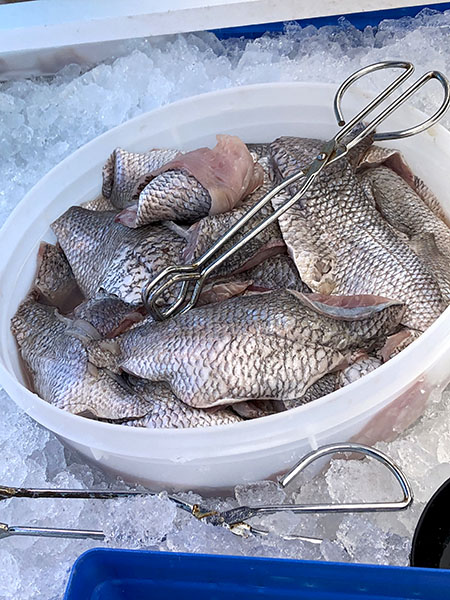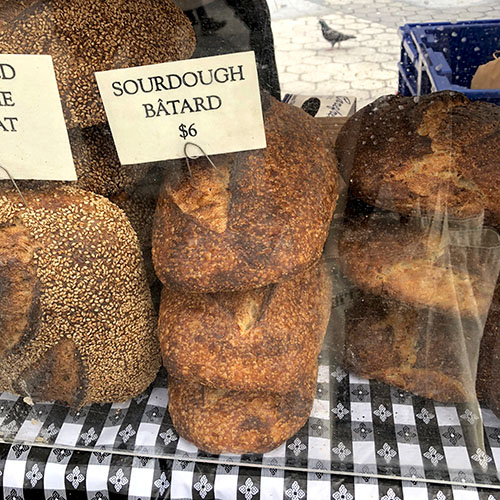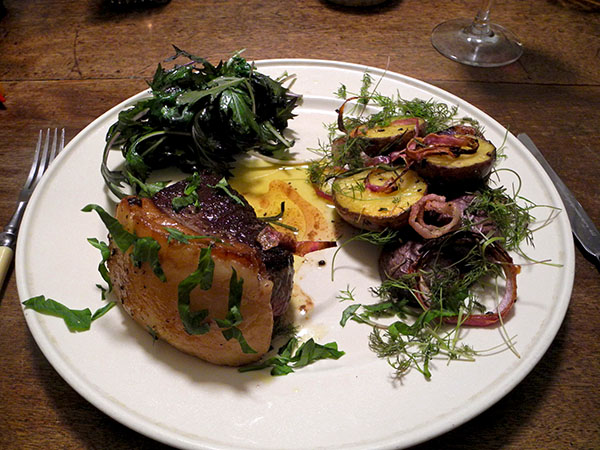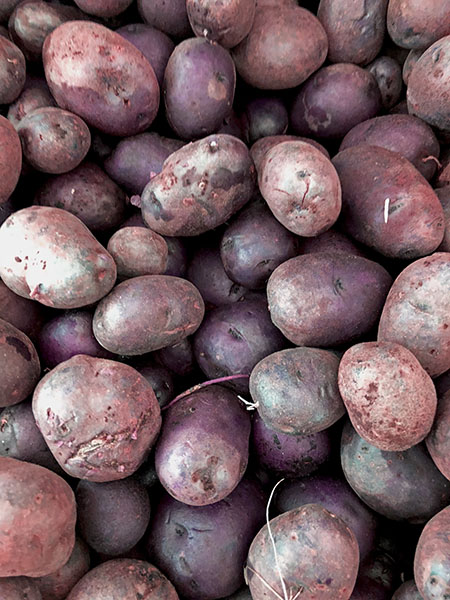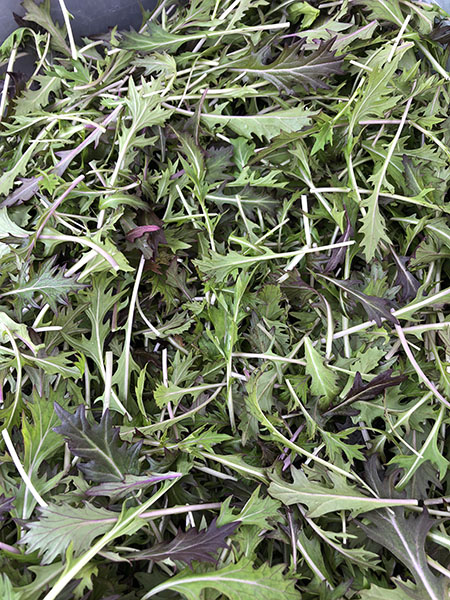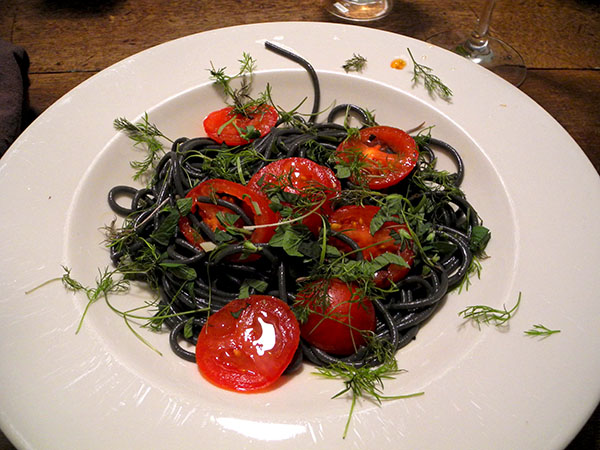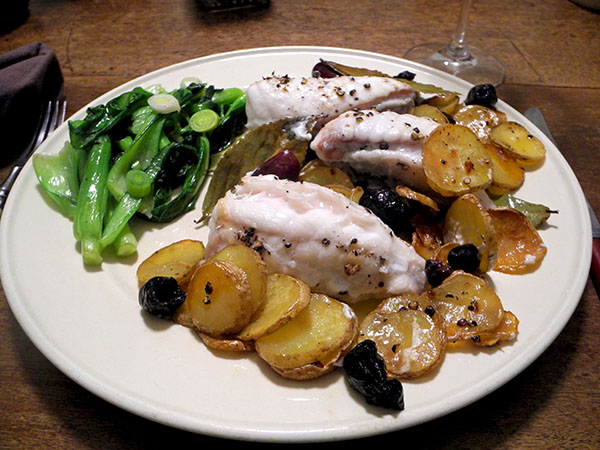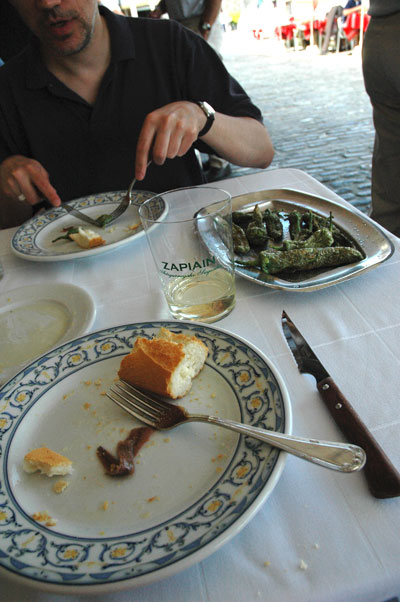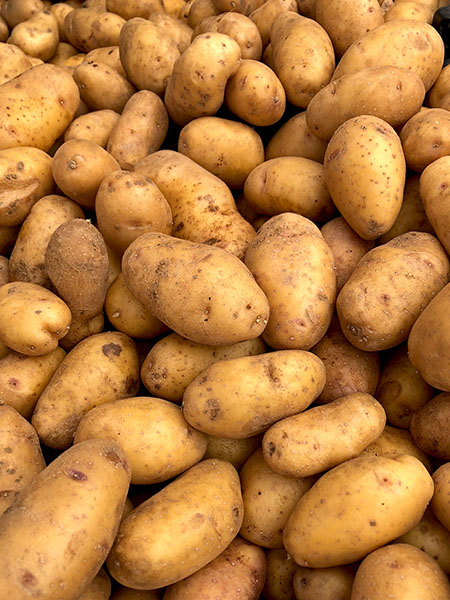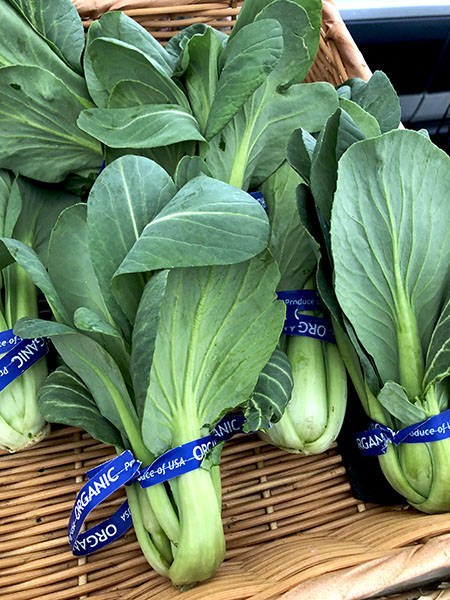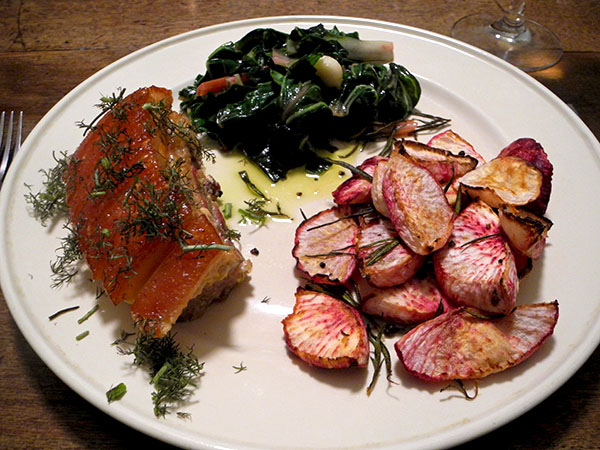
It was just about the simplest recipe possible for cooking pork belly, but it was at least as delicious as my first turn at this wonderful cut almost a year ago, when I cooked a ‘pork belly porchetta’, using a procedure that was a bit more involved. Knowing that the little roast could be served either warm or at room temperature relieved some of the stress of having to guess the cooking time for a piece that weighed little over a pound, while preparing 2 vegetables with very different requirements.
The vegetables too arrived on the table with very few extras, and little fuss, although both the turnips and the chard had started out pretty well equipped.
The turnip color was spectacular, although much of the red disappeared when they were peeled.
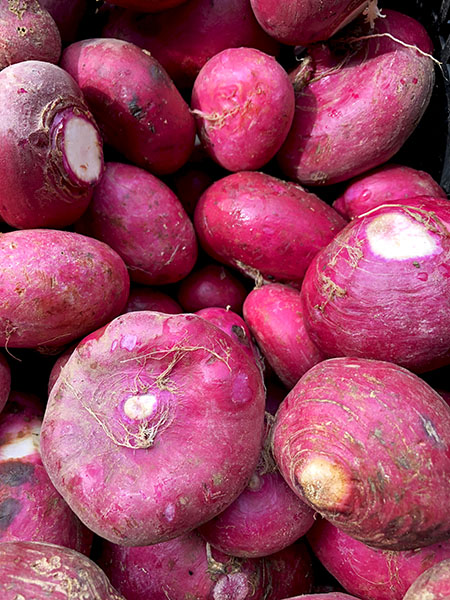
I would normally describe the greens as rainbow chard, but the one bunch left on the table when I arrived at the farm stall didn’t include any true yellow stems, so I’ll call it ‘half-rainbow chard’.
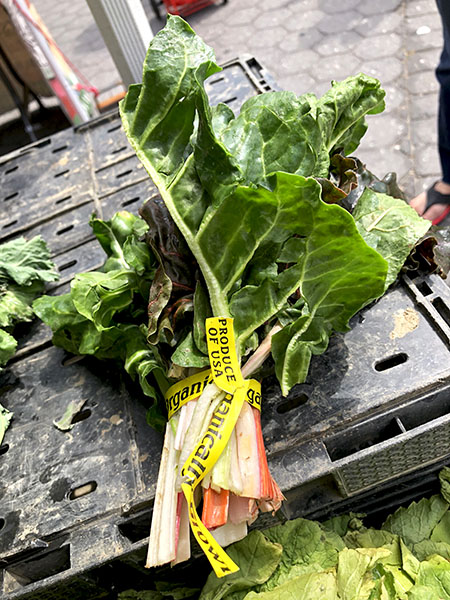
Only the pork was served with a garnish, but the turnips, shown here before they went into the oven, were joined by some very fresh rosemary early on.
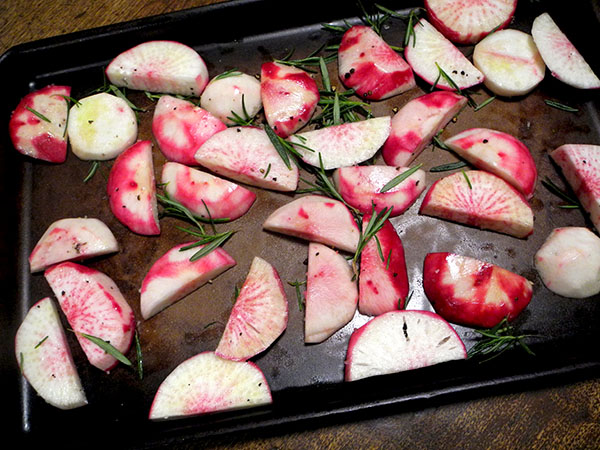
- *one section of pork belly (1.09 pounds) from Flying Pigs Farm, rinsed in cold water, patted dry, the fat side scored at one-centimeter intervals, and the piece halved to keep it from curling while cooking, the flesh side seasoned with sea salt and freshly-ground black pepper, then placed skin side up inside an oval enameled cast iron pot on top of 10 or so fresh small-to-medium-size sage leaves, that surface seasoned with more sea salt, roasted inside a roughly 465º F oven for about 25 minutes, or until the skin was starting to blister and crackle, then enough whole milk added to the pot to come halfway up the side of the meat (this is why it’s best to use a pot little larger than the piece of meat), the heat reduced to 325º and roasted for another hour, possibly less, or until the meat is “meltingly tender”, as the recipe that I used reads, the pork removed from both the oven and the pot (the milk will curdle if the meat is left inside), and either kept warm or allowed to cool (I kept it warm while finishing the vegetables, and garnished it with bronze fennel from Norwich Meadows Farm)
- red turnips from Norwich Meadows Farm, scrubbed, peeled, and cut into half-inch-thick slices, tossed with Portuguese olive oil, sea salt, freshly-ground black pepper, and a generous amount of very fresh rosemary leaves from Stokes Farm, roasted inside a large Pampered Chef unglazed ceramic pan for about 30 minutes at 425º
- one modest-size bunch of ‘half-rainbow chard’ from Norwich Meadows Farm, wilted in a little Portuguese olive oil in which three small Keith’s Farm Rocambole garlic cloves had first been heated and slightly softened, seasoned with sea salt and freshly-ground black pepper, and finished with a little more olive oil and a bit of juice from a Whole Foods Market organic lemon
- the wine was a German (Rheinhessen) white, Scheurebe Sonnentau Trocken, Gysler 2014, from Astor Wines
- the music was Phil Kline‘s program, ‘Unsilence’, on New Sounds, streaming
